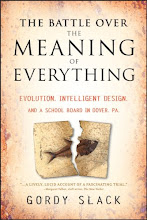This is the launch of my new feature on brains and the movies. I've been waiting for a good first-run movie to start with. Avatar is it.
For one, it’s a great film. For another, the plot is built around neural interface technology and interspecies neural networks. James Cameron's story has earthlings invading Pandora, a planet somewhere in the Andromeda galaxy, where there are deposits of unobtanium, a super-valuable, anti-gravity, superconducting material. The earthlings are trying to get the large, beautiful, cat-like, Paleolithic Na’vi people to move their village off of a huge, underground source of the stuff. To do that, they’re trying to infiltrate Na’vi society with human-Na’vi hybrid clones that can be remotely controlled by human operators. Barring that option, they will simply wipe out the Na’vi.
Interesting to me, from a brainlover’s point of view, is the idea that an organism could be remotely operated, or “inhabited,” if you had sufficient wireless bandwidth combined with the right kind of interface, which, in this case, would be a B-to-B (brain-to-brain) interface, with the second brain being a biologically-engineered, modified clone of the humans. There’s a ton of work on brain-computer interfaces and in decades to come, as computers become more like brains, and as we develop better computer models of our brains, this will be come less and less fiction and more and more science. Whether cloning technology goes anywhere, or should, is another (also fascinating) question. (Right now the hottest B-to-B tech is called language.)
But we can already operate a cursor with brain-computer interfaces controlled by brain waves. And the neural-interface technology that’s portrayed in the high-tech human machines in Avatar are well on their way, too. A few months ago I wrote a story about Jacob Rosen, a UC Santa Cruz researcher who is developing this stuff. I asked him yesterday if he recognized any of the technology in the film and he said, “The neural links in the movie are exactly the bioports that I am working on.”
National Geographic’s good January cover story is about bioports, too.
More broadly interesting is the Gaia-like interconnectedness of all the organisms living on Pandora, and the evo-bio-tech that makes it possible. The anthropologist studying the planet, played by Sigourney Weaver, has discovered that each organism is like a single neuron in a vast neural network constituting the planet’s “brain.” The Na’vi a have long, braided, mane-like appendages that end in little ports that they can plug into other organisms to communicate with them. This way they link up with the dragon-like creatures they ride on, or the big, sacred tree they worship and that acts as the repository of their collective wisdom. This interconnectedness finally comes to their rescue against the human invaders.
We humans don’t have ports, or tails, like the Na’vi, but we do have ways to plug into the natural world (and into each other) and doing so often and well will be key to our survival, too. No one doubts that we are all part of something bigger (evolution, life, Gaia) but staying in touch with that requires a little practice in a modern world obsessed with individuality and independence. Maybe that’s one big adaptive value of prayer, or meditation, or surfing (water and maybe web (is Wikipedia, our big tree?), too), or dancing, or--lets not forget--romance.
Will we one day be able to directly experience life through others, the way the human avatars do in the movie? Probably, if we don’t wipe ourselves out first. In the meantime, watching movies like Avatar is a pretty great stand-in. And 3-D makes is seem pretty direct. We’re already endowed with a nervous system that permits amazing acts of wireless empathy. For now, let’s work with that.
Subscribe to:
Post Comments (Atom)



1 comment:
Awesome blog you have hhere
Post a Comment